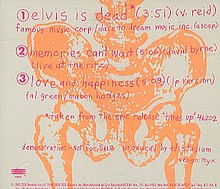이오타 칸크리
Iota Cancri| 관측 데이터 신기루 J2000.0 이쿼녹스 J2000.0 | |
|---|---|
| 별자리 | 암 |
| ι Cnc A | |
| 우측 상승 | 08h 46m 41.81988s[1] |
| 탈위임 | +28° 45′ 35.6190″[1] |
| 겉보기 크기 (V) | 4.02[2] |
| ι Cnc B | |
| 우측 상승 | 08h 46m 39.98118s[1] |
| 탈위임 | +28° 45′ 54.1932″[1] |
| 겉보기 크기 (V) | 6.57[3] |
| 특성. | |
| 스펙트럼형 | G8IIIa Ba0.2[4] + A2V[5] |
| 아스트로메트리 | |
| ι Cnc A | |
| 방사 속도 (Rv) | 15.74 ± 0.13km[6]/s |
| 고유 운동 (μ) | RA:-21.58 ± 0.75[1]mas/yr Dec.:-45.69 ± 0.56[1]mas/yr |
| 시차 (π) | 9.85 ± 0.61[1] 마스 |
| 거리 | 330 ± 20 리 (105 ± 6 pc) |
| 절대치수 (MV) | −0.79[7] |
| ι Cnc B | |
| 방사 속도 (Rv) | 25.00 ± 1.5[8] km/s |
| 고유 운동 (μ) | RA:-22.74 ± 3.45[1]mas/yr Dec.:-46.36 ± 2.56[1]mas/yr |
| 시차 (π) | 11.69 ± 2.75[1] 마스 |
| 거리 | 약 280리 (약 90pc) |
| 세부 사항 | |
| ι Cnc A | |
| 미사 | 3.43[9] M☉ |
| 반지름 | 21[6] R☉ |
| 루미도 | 204[6] L☉ |
| 표면 중력 (log g) | 2.5[6] cgs |
| 온도 | 4,954[7] K |
| 금속성 [Fe/H] | -0.14[6] 덱스 |
| 회전 속도 (v sin i) | 170km[10]/s |
| ι Cnc B | |
| 루미도 | 14.39[11] L☉ |
| 온도 | 8786[11] K |
| 나이 | 263[9] 마이어 |
| 기타 지정 | |
칸드리로48번길 | |
| Iota Cancri A: HR 3475, HD 74739, BD+29°1824, HIP 43103, SAO 80416 | |
| Iota Cancri B: HR 3474, HD 74738, BD+29°1823, HIP 43100, SAO 80415 | |
| 데이터베이스 참조 | |
| 심바드 | 자료 |
이오타 칸크리(ιι Cnc, ι Cancri)는 지구로부터 약 300광년 떨어진 암 별자리에 있는 이중 별이다.
ι 칸크리의 두 별은 30아크초씩 떨어져 있을 뿐 천천히 변화한다.비록 궤도가 도출된 것은 아니지만, 두 별은 큰 공통의 적절한 움직임을 보이며 중력과 관련이 있는 것으로 추정된다.[12]
더 밝은 별 ι 칸크리 A는 겉보기 등급이 +4.02인 노란색 G형 거성이다.그것은 점증하지 않는 거대한 가지 별에서 덜 진화된 동반자로 농축된 물질을 대량으로 전달함으로써 형성되는 것으로 생각되는 순한 바륨 별이다.ι 칸크리 계통에서는 그러한 기증자가 검출되지 않았으나, 보이지 않는 백색 왜성이 있는 것으로 추측된다.[13]
두 별의 실신인 ι 칸크리 B는 겉보기 크기가 +6.57인 흰색 A형 주계열성 왜성이다.빠른 회전에 의해 배출되는 물질에 둘러싸인 조개별이다.[14]
참조
- ^ a b c d e f g h i j Van Leeuwen, F. (2007). "Validation of the new Hipparcos reduction". Astronomy and Astrophysics. 474 (2): 653–664. arXiv:0708.1752. Bibcode:2007A&A...474..653V. doi:10.1051/0004-6361:20078357. S2CID 18759600.
- ^ Mermilliod, J.-C. (1986). "Compilation of Eggen's UBV data, transformed to UBV (unpublished)". Catalogue of Eggen's UBV Data. Bibcode:1986EgUBV........0M.
- ^ Ducati, J. R. (2002). "VizieR Online Data Catalog: Catalogue of Stellar Photometry in Johnson's 11-color system". CDS/ADC Collection of Electronic Catalogues. 2237. Bibcode:2002yCat.2237....0D.
- ^ Keenan, Philip C.; McNeil, Raymond C. (1989). "The Perkins catalog of revised MK types for the cooler stars". Astrophysical Journal Supplement Series. 71: 245. Bibcode:1989ApJS...71..245K. doi:10.1086/191373.
- ^ Grenier, S.; Baylac, M.-O.; Rolland, L.; Burnage, R.; Arenou, F.; Briot, D.; Delmas, F.; Duflot, M.; Genty, V.; Gómez, A. E.; Halbwachs, J.-L.; Marouard, M.; Oblak, E.; Sellier, A. (1999). "Radial velocities. Measurements of 2800 B2-F5 stars for HIPPARCOS" (PDF). Astronomy and Astrophysics Supplement. 137 (3): 451. Bibcode:1999A&AS..137..451G. doi:10.1051/aas:1999489.
- ^ a b c d e Massarotti, Alessandro; Latham, David W.; Stefanik, Robert P.; Fogel, Jeffrey (2008). "Rotational and Radial Velocities for a Sample of 761 HIPPARCOS Giants and the Role of Binarity". The Astronomical Journal. 135 (1): 209–231. Bibcode:2008AJ....135..209M. doi:10.1088/0004-6256/135/1/209.
- ^ a b Kovtyukh, V. V.; Chekhonadskikh, F. A.; Luck, R. E.; Soubiran, C.; Yasinskaya, M. P.; Belik, S. I. (2010). "Accurate luminosities for F-G supergiants from FeII/FeI line depth ratios". Monthly Notices of the Royal Astronomical Society. 408 (3): 1568. Bibcode:2010MNRAS.408.1568K. doi:10.1111/j.1365-2966.2010.17217.x.
- ^ Gontcharov, G. A. (2006). "Pulkovo Compilation of Radial Velocities for 35 495 Hipparcos stars in a common system". Astronomy Letters. 32 (11): 759–771. arXiv:1606.08053. Bibcode:2006AstL...32..759G. doi:10.1134/S1063773706110065. S2CID 119231169.
- ^ a b Takeda, Yoichi; Sato, Bun'ei; Murata, Daisuke (2008). "Stellar Parameters and Elemental Abundances of Late-G Giants". Publications of the Astronomical Society of Japan. 60 (4): 781. arXiv:0805.2434. Bibcode:2008PASJ...60..781T. doi:10.1093/pasj/60.4.781. S2CID 16258166.
- ^ Royer, F.; Grenier, S.; Baylac, M.-O.; Gómez, A. E.; Zorec, J. (2002). "Rotational velocities of A-type stars in the northern hemisphere. II. Measurement of v sin i". Astronomy and Astrophysics. 393 (3): 897–912. arXiv:astro-ph/0205255. Bibcode:2002A&A...393..897R. doi:10.1051/0004-6361:20020943. S2CID 14070763.
- ^ a b McDonald, I.; Zijlstra, A. A.; Boyer, M. L. (2012). "Fundamental parameters and infrared excesses of Hipparcos stars". Monthly Notices of the Royal Astronomical Society. 427 (1): 343–357. arXiv:1208.2037. Bibcode:2012MNRAS.427..343M. doi:10.1111/j.1365-2966.2012.21873.x. S2CID 118665352.
- ^ Eggen, Olin J. (1994). "Photometry of F-K type bright giants and supergiants. 3: The luminosity, reddening, and heavy element abundance of GK stars". The Astronomical Journal. 107: 2184. Bibcode:1994AJ....107.2184E. doi:10.1086/117030.
- ^ Eggleton, P. P.; Tokovinin, A. A. (2008). "A catalogue of multiplicity among bright stellar systems". Monthly Notices of the Royal Astronomical Society. 389 (2): 869. arXiv:0806.2878. Bibcode:2008MNRAS.389..869E. doi:10.1111/j.1365-2966.2008.13596.x. S2CID 14878976.
- ^ Hauck, B.; Jaschek, C. (2000). "A-shell stars in the Geneva system". Astronomy and Astrophysics. 354: 157. Bibcode:2000A&A...354..157H.




